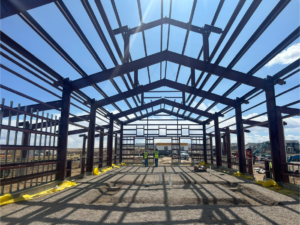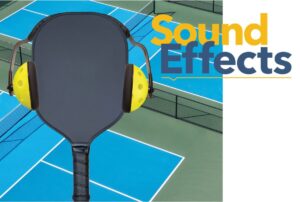Size Requirements for Multi-Sport Courts
Multi-sport courts offer versatility, allowing multiple sports to be played on a single surface. These courts maximize space and accommodate different athletic activities, making them ideal for schools, community centers, and residential developments. This article explores the size requirements for various sports on a multi-sport court, striping considerations, overlap challenges, perimeter space needs, and court surfacing recommendations.
Variety of Possible Sports on a Multi-Sport Court
A well-designed multi-sport court can support several sports, including basketball, tennis, volleyball, pickleball, futsal, and badminton. The key is to optimize the court’s size and layout to accommodate these activities without compromising playability.
- Basketball: A full-size basketball court measures 94 feet by 50 feet. For half-court play, 47 feet by 50 feet is sufficient.
- Tennis: A standard tennis court measures 78 feet by 36 feet, with additional space needed for movement.
- Volleyball: A volleyball court requires 60 feet by 30 feet, including space for players to move around the net.
- Pickleball: A pickleball court is 44 feet by 20 feet, with extra perimeter space for comfortable play.
- Futsal: Futsal courts range from 82 feet by 49 feet to 105 feet by 66 feet, depending on the level of play.
- Badminton: A badminton court requires 44 feet by 20 feet, similar to pickleball, but with different marking requirements.
Size Requirements for Sports Combinations
Combining multiple sports on one court requires careful planning to ensure the dimensions meet the needs of each activity. Here are some typical combinations and their size requirements:
- Basketball and Tennis: Combining these sports on a single court typically requires a minimum size of 94 feet by 60 feet. This size allows for a full basketball court with space for tennis lines, though the tennis net would need to be removable.
- Basketball and Volleyball: A combined basketball and volleyball court needs at least 94 feet by 50 feet. The basketball lines typically dominate, with the volleyball net placed across the court.
- Pickleball and Badminton: Pickleball and badminton courts share similar dimensions, so a 44 feet by 20 feet space works for both. Using different striping colors or dashed lines helps distinguish between the two sports.
- Futsal and Basketball: A court size of 105 feet by 66 feet can accommodate both futsal and basketball. The larger futsal dimensions can encompass the basketball lines without interference.
- Smaller courts can accommodate half-court layouts and a wide variety of other combinations. Every sport court is unique to the specific program of possible uses and striping and equipment configurations.

Striping Requirements and Overlap Considerations
Striping is crucial for multi-sport courts to ensure clarity and functionality. Each sport has specific line requirements, and overlapping lines can cause confusion if not handled carefully.
- Basketball: The court must include the main court lines, three-point arcs, free-throw lines, and center circle. Ensure these lines are distinct, especially if the court will host other sports.
- Tennis: Tennis requires baseline, service box, and center mark lines. On a multi-sport court, these lines often overlap with basketball markings, so use a different color or dashed lines for clarity.
- Volleyball: Volleyball lines include the court boundary and the attack line. These lines should be a separate color to avoid confusion with basketball or tennis lines.
- Pickleball: The pickleball court includes baseline, non-volley zone (kitchen), and service lines. Since pickleball courts are smaller, avoid overlapping with larger sports and use a unique color for its lines.
- Futsal: Futsal requires goal lines, penalty areas, and center circle markings. These markings can overlap with basketball if using the same court, so plan carefully.
Optimal Perimeter Space Around the Court
Perimeter space around a multi-sport court is essential for safety and playability. The recommended space varies by sport:
- Basketball: The court should have at least 10 feet of perimeter space on all sides to allow for player movement and safety.
- Tennis: For tennis, the USTA recommends at least 21 feet behind the baselines and 12 feet on the sides.
- Volleyball: Volleyball courts need 10 feet of clearance around the court to accommodate player movement, especially near the net.
- Pickleball: Pickleball courts should have 10 feet of perimeter space, particularly behind the baselines, to ensure comfortable play.
- Futsal: Futsal courts require 6 feet of space on the sides and 10 feet behind the goals for safety and mobility.
Court Surfacing Recommendations for Multi-Sport Courts
Choosing the right surface for a multi-sport court ensures durability and playability across different activities. Consider these options:
- Acrylic: Acrylic surfaces are popular for multi-sport courts. They provide good traction, durability, and weather resistance. They also come in various colors, which is helpful for multi-sport striping.
- Asphalt: Asphalt is a cost-effective option that offers durability. However, it can be hard on players’ joints, making it less ideal for sports like volleyball and pickleball.
- Polyurethane: Polyurethane surfaces provide excellent shock absorption, making them suitable for high-impact sports like basketball and futsal. This surface is also versatile for different sports.
- Modular Tiles: Interlocking modular tiles offer a versatile and easy-to-install surface for multi-sport courts. They provide good traction and are suitable for both indoor and outdoor use. However, they may require frequent maintenance to keep them in top condition.
Conclusion
Designing a multi-sport court requires careful consideration of the size requirements, striping, and surface materials to ensure functionality for multiple activities. By optimizing the court layout, striping, and perimeter space, you can create a versatile and efficient space that meets the needs of various sports. Whether for a school, community center, or residential area, a well-planned multi-sport court offers flexibility and value. By following these guidelines, you can design a multi-sport court that serves multiple functions and meets the needs of various sports and players.
References
- American Sports Builders Association (ASBA). (2023). Multi-Sport Court Design Guidelines. Retrieved from ASBA
- United States Tennis Association (USTA). (2023). Tennis Court Dimensions and Construction. Retrieved from USTA
- USA Pickleball Association (USAPA). (2022). Pickleball Court Construction and Dimensions. Retrieved from USAPA
- Federation Internationale de Basketball (FIBA). (2021). Basketball Court Requirements. Retrieved from FIBA










